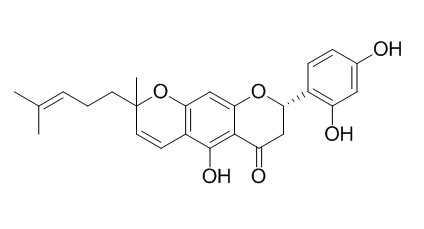Kuwanol C
Kuwanol C is a natural product from Morus alba L.
Inquire / Order:
manager@chemfaces.com
Technical Inquiries:
service@chemfaces.com
Tel:
+86-27-84237783
Fax:
+86-27-84254680
Address:
1 Building, No. 83, CheCheng Rd., Wuhan Economic and Technological Development Zone, Wuhan, Hubei 430056, PRC
Providing storage is as stated on the product vial and the vial is kept tightly sealed, the product can be stored for up to
24 months(2-8C).
Wherever possible, you should prepare and use solutions on the same day. However, if you need to make up stock solutions in advance, we recommend that you store the solution as aliquots in tightly sealed vials at -20C. Generally, these will be useable for up to two weeks. Before use, and prior to opening the vial we recommend that you allow your product to equilibrate to room temperature for at least 1 hour.
Need more advice on solubility, usage and handling? Please email to: service@chemfaces.com
The packaging of the product may have turned upside down during transportation, resulting in the natural compounds adhering to the neck or cap of the vial. take the vial out of its packaging and gently shake to let the compounds fall to the bottom of the vial. for liquid products, centrifuge at 200-500 RPM to gather the liquid at the bottom of the vial. try to avoid loss or contamination during handling.
Eur J Pharmacol.2023, 951:175770.
Pharmaceuticals (Basel).2024, 17(10):1368.
Front Plant Sci.2018, 9:1424
Ecol Evol.2022, 12(11):e9459.
mBio.2020, 11(3):e00686-20.
Eur J Pharmacol.2024, 981:176883.
Int J Mol Sci.2022, 23(21):12816.
Horticulturae2024, 10(5), 486.
Mol Biol Rep.2022, doi: 10.1007
Antiviral Res.2013, 98(3):386-93
Related and Featured Products
Heterocycles, 1989 , 29 (4):807-13.
Two New Phenolic Compounds, Kuwanols C and D, from the Root Bark of a Mulberry Tree Redifferentiated from the Callus Tissues[Reference:
WebLink]
METHODS AND RESULTS:
A new isoprenoid-substituted flavanone, Kuwanol C, and a new isoprenoid-substituted chalcone, kuwanol D, were isolated from the root bark of a mulberry tree redifferentiated from the callus tissues along with eight known phenolic compounds.
CONCLUSIONS:
On the basis of spectral evidence, structures of Kuwanol C and kuwanol D were shown to be {A figure is presented} and {A figure is presented}, respectively.



